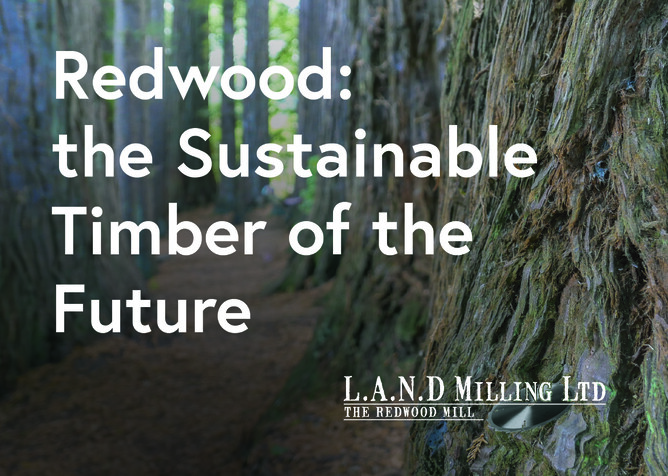More and more people these days are starting to turn to Redwood timber for their cladding and other building needs, recognising its pros as a locally grown cedar alternative. But although its beautiful red and gold aesthetics and hard-wearing, low shrinkage qualities are a major drawcard for many, there’s another aspect to Redwood timber that is even more attractive for a growing number of New Zealanders: its sustainability. Redwood ticks a lot of boxes as an eco-conscious building material - read a little further to find out why Redwood is such an excellent choice for the planet.
Cut the miles
When people are looking to kit out their house with a beautiful, durable cladding, the traditional choice tends to be American cedar. But there’s one big problem with American cedar for those hoping to be more mindful of their environmental footprint: as its name would suggest, it has to be imported from the United States. A lot of fossil fuels have to be burned in order to ship timber right across the Pacific Ocean, so by the time it arrives at your building site, American cedar will have racked up quite a hefty carbon footprint. Californian Redwood is another story entirely. Despite the name, this tree has been grown right here in New Zealand since the earliest years of the 20th century, and is still cultivated here for timber to this day. When it comes to a choice between imported timber and an excellent, locally grown alternative, it’s not hard to see which one the environment will be thanking you for.
From death, new life
Most trees reproduce by spreading their seeds - those scattered seeds then have the chance to grow into saplings and so forth. Redwoods are perfectly capable of reproducing this way, but they also have another trick up their leafy sleeve that many other trees (especially those used for timber) don’t have access to. A tree that has been cut down for its timber no longer has a chance to create or spread seeds, but the stump of a harvested Redwood grows new shoots that can be nurtured into a mature, harvestable tree. This means that there’s no need for intensive replanting every time a stand of Redwood is cut down for timber: within each stump lies the potential for regrowth. Not only is this kinder to the soil and its surrounding ecosystem than the process of uprooting and replanting, it also maximises the amount of time that cultivated Redwoods spend in the ground as oxygen giving, carbon absorbing organisms.
Exceptional absorbers
If you needed yet another example of locally grown Redwood’s contribution to sustainability, there’s this fun science fact: studies have shown that Californian Redwoods absorb over three times as much carbon dioxide from human emissions compared to other trees. Obviously once a Redwood is providing your house with beautiful cladding, its CO2 capturing days are over, but while it grows to maturity it will be cleaning New Zealand’s air more efficiently than almost anything else in the world.
Redwood stands up as a quality building material on its own construction and aesthetic based merits, but with so many eco-friendly attributes to add to that, it’s no wonder that Kiwis are starting to turn to this locally grown beauty to create a lasting difference in their own home.


